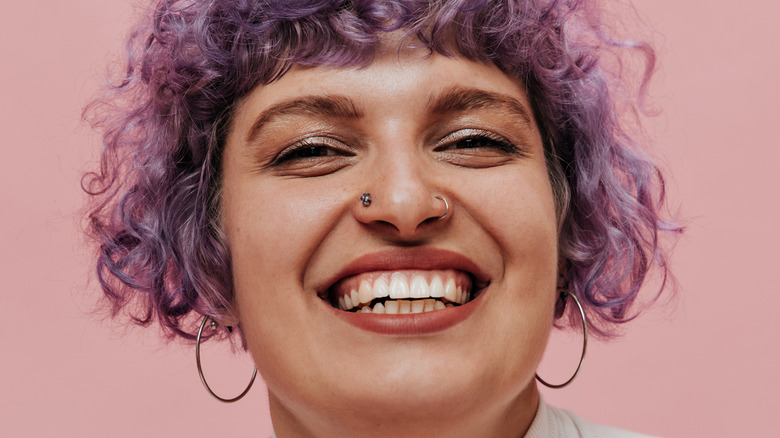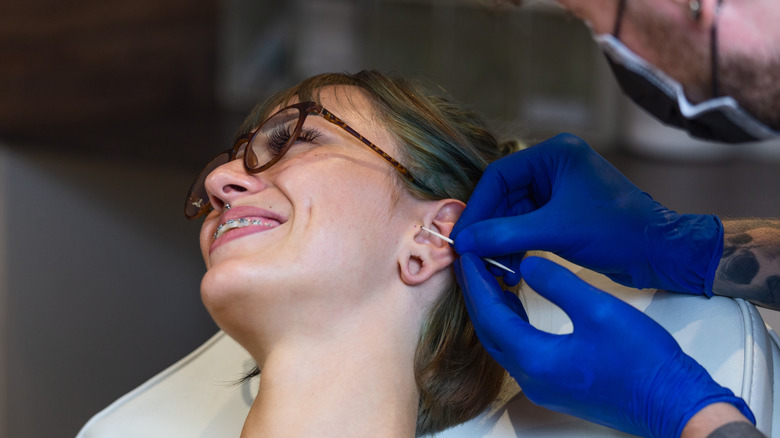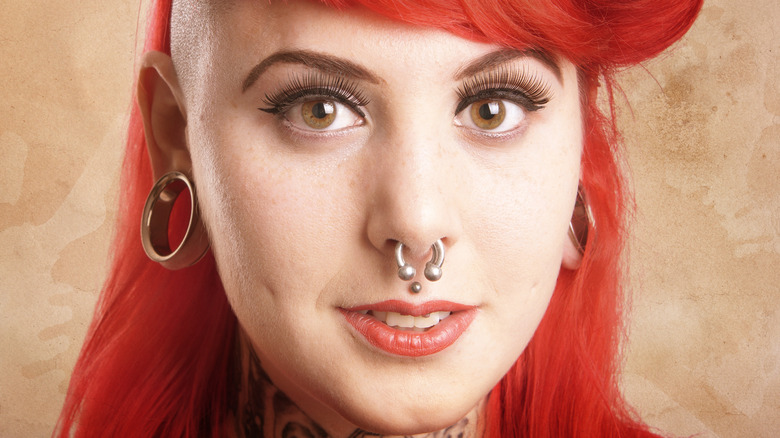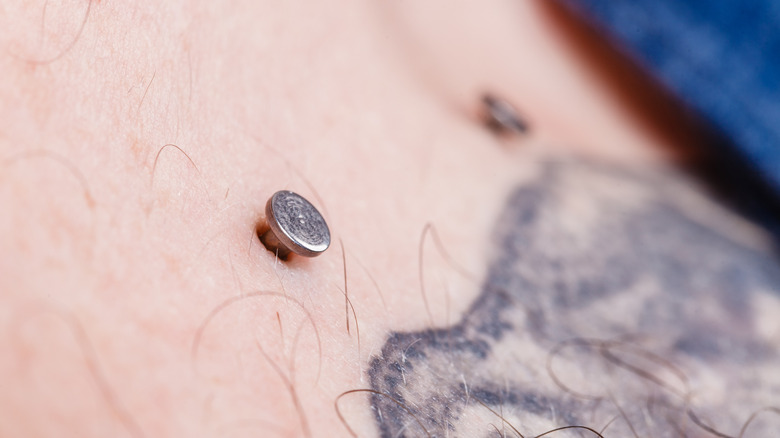The Definitive Guide To All Types Of Body Piercings
If you're thinking of getting a piercing, the first thing to figure out is where on your body to get it. The opportunities are seemingly endless — from ear lobe piercings to others on the face to piercings up and down the body. For somebody after body modifications, piercings can be a great starting point as they're not as permanent as tattoos, for example, but can still make a drastic difference to your look.
There are so many different sorts of piercings that deciding on the right one for you can be a little overwhelming. Well, that's just what we're here for. Keep reading for the ultimate guide to all types of body piercings, so you can decide once and for all which piercing might be best for you. Of course, there are some things to bear in mind no matter what piercing you get, and we'll cover those too. Yup, it's all in here.
Ear piercings: It's not just the lobes
When you think of piercings, the classic earlobe piercing is probably the one that comes to mind first. Go into any middle school and you'll see numerous girls — and some of the boys, too — with their earlobes pierced, as it's long been the most socially acceptable place to get pierced and is usually the first place to get pierced. In some cultures, it's traditional to pierce infants' ears, while in others it's more commonplace for people to wait a few years beforehand (via Healthline). Either way, earlobe piercings are the most ubiquitous piercings there are.
Earlobe piercings are the easiest to get, and while they hurt a little, they still fall pretty low down on the pain scale (via Byrdie). If you're thinking of either getting your lobes pierced or taking a young relative to get theirs done, it's best to go somewhere that uses a needle. You might envisage sitting in the mall while the piercer gets their gun ready, but according to Liveabout, it's better to pierce the earlobes with a needle instead.
However, you can also branch out from the lobes. Some people choose to decorate their ear with a real array of piercings, from tragus piercings to the more daring industrial piercing that goes from one part of the ear cartilage to another, effectively providing two piercings in one!
Piercings on the rest of the face
A little edgier than ear piercings but not quite as out-there as some of the piercings you can get, we have facial piercings!
Many people have nose piercings, which normally go through one nostril. They're particularly popular in some cultures (via Metro), but people all around the world have them. An alternative to the nostril piercing is the septum piercing, which — as the name suggests — goes through the septum, or the center of the nose. Some people find it painful, while others don't mind it so much. Like many facial piercings, the pain can differ from person to person.
Alternatives include the nasallang piercing, which goes through both nostrils and the septum, and the bridge piercing, which goes at the top of your nose between the eyes. The former tends to hurt more because it's three piercings in one, but the latter usually isn't too painful due to the lack of nerve endings; it's more of a pinch (via FreshTrends).
This brings us to mouth and lip piercings. There are dimple piercings, which are pretty self-explanatory; tongue piercings, which you'll probably be more familiar with as they've traditionally been more common; and a whole range of lip piercings, from snakebites to the labret (via Byrdie). With these piercings, it's usually recommended to restrain from smoking and drinking, and aftercare can be a little more involved as eating and drinking can prove tricky (via Body Piercing).
Body piercings are less common, but could be right for you
Most often, we see piercings on the ears and the rest of the face, but piercings can appear on the rest of the body, too. However, these can sometimes take longer to heal than other piercings, and there's also a higher risk of rejection.
With the possibilities for body piercings being so broad, they fall all over the pain scale — nipple and genital piercings tend to be among the most painful, while belly button piercings don't hurt quite as much because there's more tissue (via Byrdie).
Belly button piercings do take a lot of aftercare, however, as plenty of germs live around this area. For three or months after the piercing itself, you'll need to make sure the area is kept clean — and don't touch your jewelry unless you have to! Alternatives include nape piercings, which involve a bar at the nape (back) of the neck, and the Madison piercing, which goes at the front of the neck, near the clavicle. Then there's the vampire bite piercing on the neck or shoulder and sternum or cleavage piercings — all of these have a pretty high rate of rejection, however.
Finally, for something that's really unique, there are corset piercings, which are in parallel rows so that you can connect them with string or ribbon (via Byrdie). Which type of body piercing will you get next?



